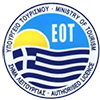Easter in Thassos: Greece plays host to religious festivals with deeply rooted customs and centuries-old traditions all year round. Across the country Easter is the most important religious holiday of the Orthodox Church accompanied with traditions and customs that date back to time.
After a forty day period of fasting, preparations and traditions, most people follow the Holy Week ritual, giving themselves body and soul into the culmination of the Passion of Christ and finally rejoicing in His Resurrection.
Easter in Thassos – Palm Sunday
On the Saturday before Holy Week (Palm Sunday), the Orthodox Church commemorates a major feast of the year, the miracle of Jesus Christ, when he raised Lazarus from the dead after he had lain in the grave four days. Here, at the end of Great Lent and the forty days of fasting and penitence, the Church combines this celebration with that of Palm Sunday.
In triumph and joy the Church bears witness to the power of Christ over death and exalts Him as King before entering the most solemn week of the year, one that leads the faithful in remembrance of His suffering and death and concludes with the great and glorious Feast of Pascha.
On this Sunday children go around the villages with baskets, they knock on doors and sing Easter carols to spread the word around, that Lazarus is risen from the dead and to collect eggs that later on in the week, are needed for the tradition of dying the eggs red. On the same day people can eat fish.
Easter in Thassos – Holy Tuesday
One of Easter’s custom that takes place, is baking Easter cookies and “tsoureki” (traditional sweet bread). Housewives usually do this on Holly Tuesday but it also depends on the area they live in, it might defer from village to village.
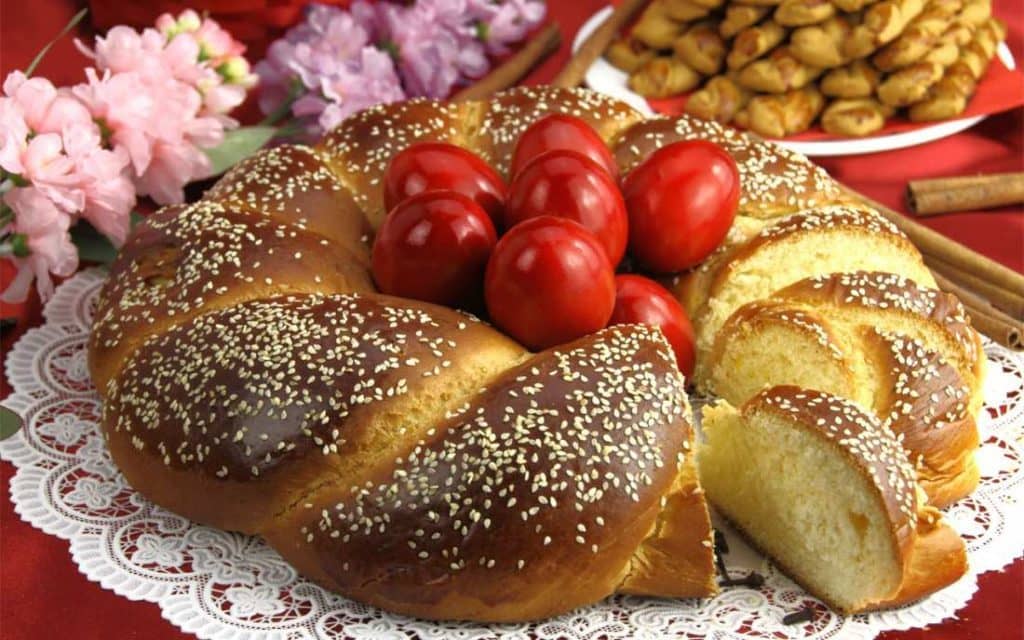
Easter in Thassos – Holy Thursday
Coming up to Easter Sunday the Greek orthodox get busier by the day. On Holy Thursday people dye red eggs that symbolize Christ’s blood and the rebirth of life and then they hang out red cloths or clothes on their washing lines.
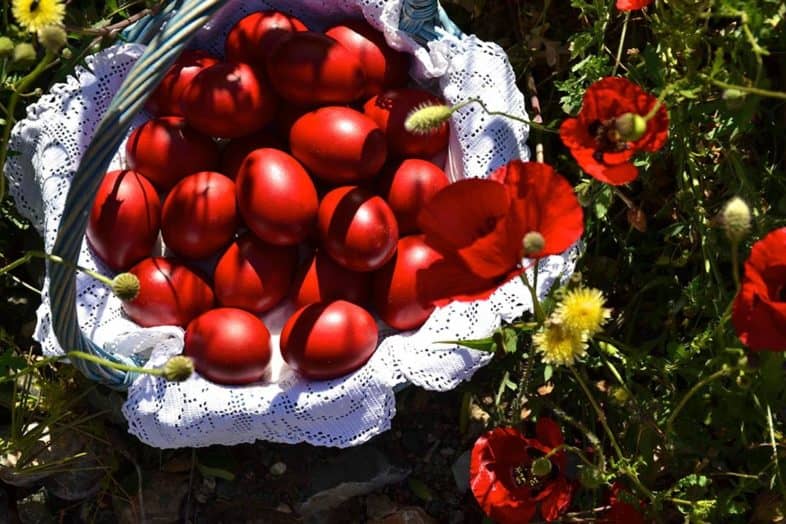
In the evening all churches include a symbolic representation of the crucifixion and the reading of the twelve gospels. After the service women gather to decorate the Epitaph with fresh spring flowers and the mourning time begins. People stay up all night at the church finishing off the decorating.
Good Friday
Church bells ring mournfully all day and food is very simple as this is the most important fasting day of the Holy Week. During the day, the faithful visit the church and kneel before the Epitaph or crawl under it three times in a shape of a cross.
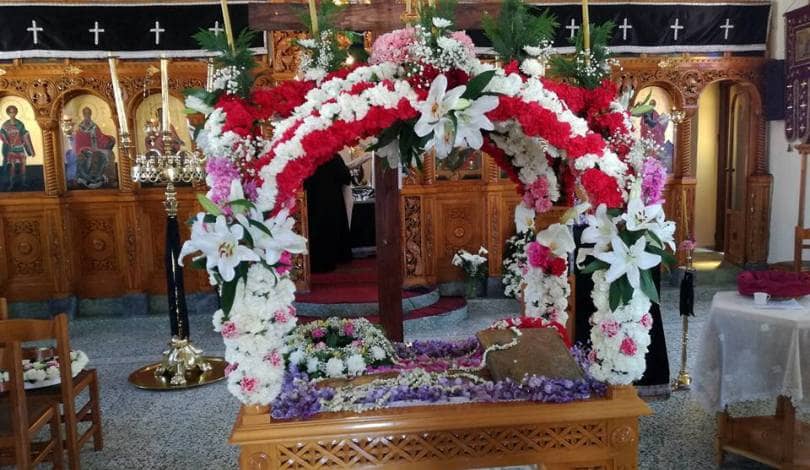
In the evening a funeral service is held and the Epitaph* is carried on the shoulders of the faithful in a procession through the community, followed by people holding candles and singing psalms or a local band playing the mornful psalms called “egomia”.
*a Holly Table with a Christian religious icon, typically consisting of a large, embroidered and often richly adorned cloth, bearing an image of the dead body of Christ, often accompanied by his mother and other figures, following the Gospel account on it, where the priest may also anoint with perfumed oil.
Holy Saturday
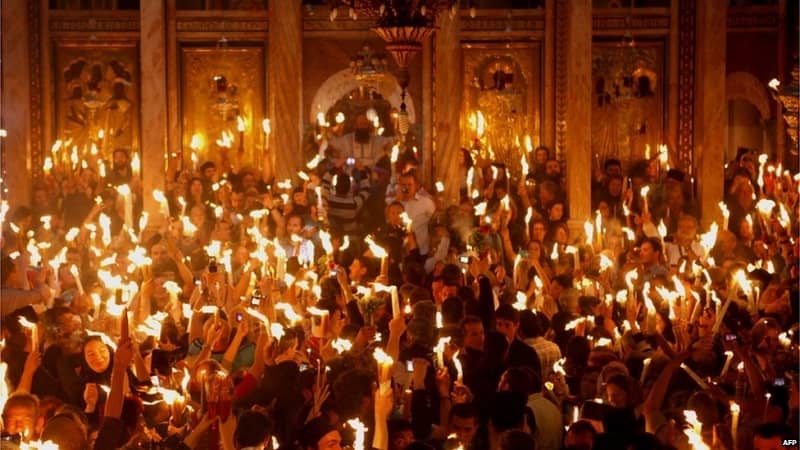
On Holy (or Great) Saturday, the Eternal Flame is brought to Greece by a military jet and is distributed to waiting priests who carry it to their local churches.
The service starts at 23:00 and people start to gather at their local churches holding the “labatha” (a big candle) that is only used for that Easter midnight service. A few minutes before midnight people and priests gather outside the church and at exactly at twelve o’clock at midnight, priests call out “Christos Anesti” (Christ is risen) and passes the holy flame to those nearest to him and then one passes it to another.
Fireworks begin to light up the sky and people exchange traditional Easter wishes (“Christos Anesti – Christ is risen and in response, “Alithos Anesti” – truly, He is risen).
It is custom to carry the Holy flame back home and smoke the doorframe to bless the house. With the flame people create a cross above their doors, it means that the light of the Resurrection has blessed the home. The candles are used to light icon candelabra and are put on the table for the midnight meal.
The sight of hundreds of candle flames moving from churches to homes on that night is indeed beautiful. Family and friends then, gather to eat the traditional soup “magiritsa” (made with chopped offal and herbs) and crack red eggs that symbolize the opening of the tomb.
Easter Sunday
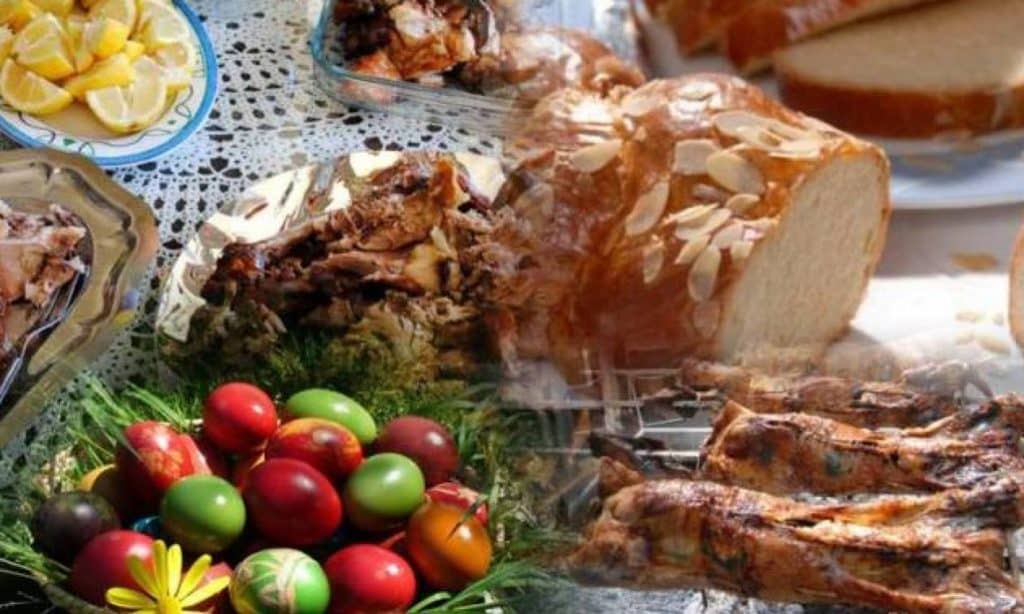
On the morning of Easter Sunday, the faithful go to the church service again where they light their candles and crack their eggs for one more time. Earlier on, in some villages like Panagia, there is a tradition, where a life size doll Ioudas (Judas) is carried around the village on a donkey and then he is hung up in the yard of the church and burnt.
Some stay back to prepare the spits that are set to work, and grills are fired up. Easter tables are prepared and family and friends celebrate with a meal that includes a whole roasted lamb or goat, prepared on the spit or baked in the oven. Greek Wines, tsipouro, and other drinks flow freely, and preparations for the meal turn into festive celebrations even before the eating begins.
Would you like to travel for Easter to Thassos? Book your rental car now!
Wishing you a Happy Easter!

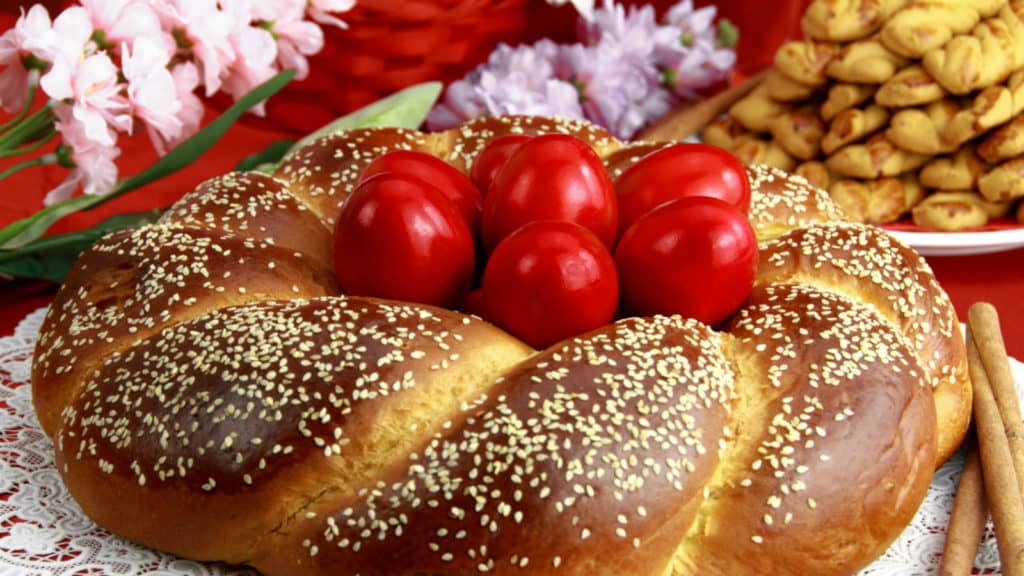
 German
German Greek
Greek Română
Română Polski
Polski

